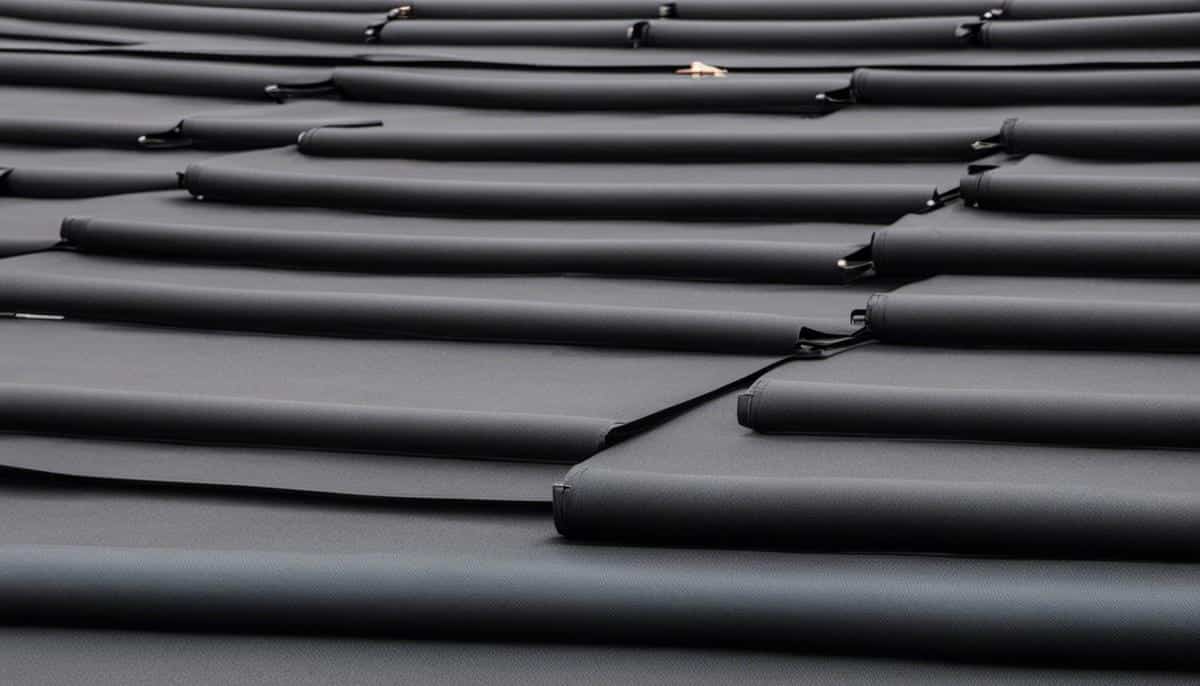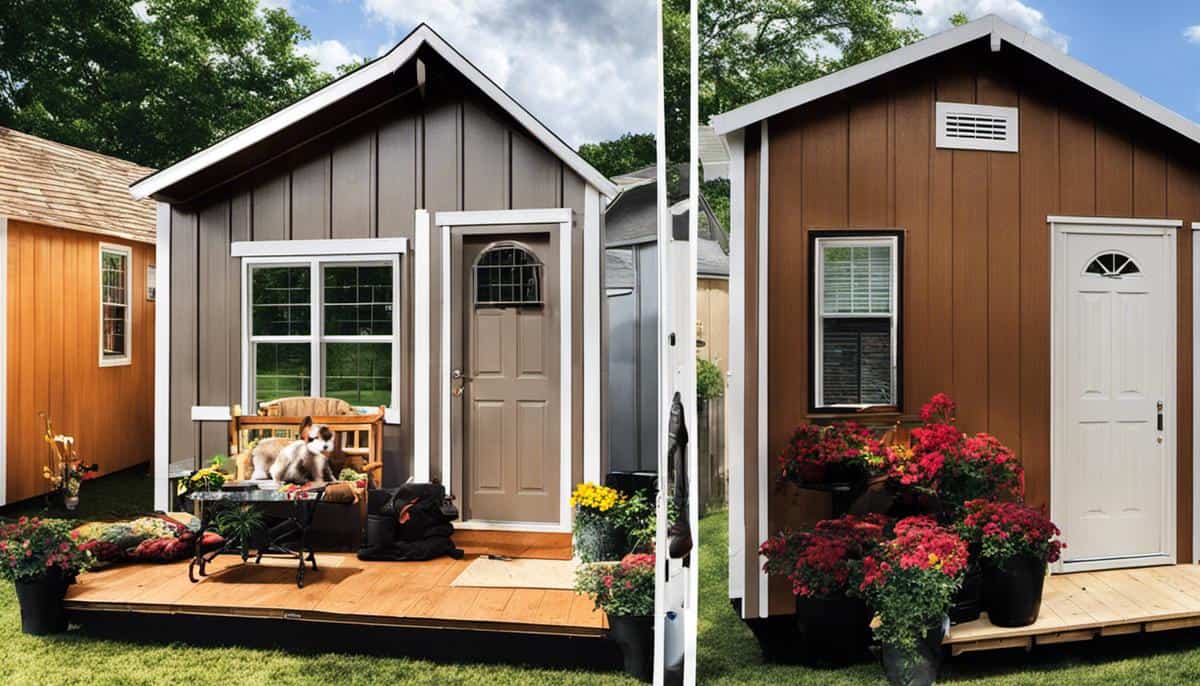
21 Sep Understanding Roll Roofing: A Beginner’s Guide
Roll roofing is emerging as an essential solution in constructing and preserving homes. Essential for its effectiveness and suitability, roll roofing offers advantages that have made it a favored choice among homeowners and industries alike. This versatile roofing material is crafted from the same materials as asphalt shingles, making it a familiar yet versatile roofing option. As we delve into the realm of roll roofing, this discussion will provide a comprehensive understanding of the definition, components, and common uses of roll roofing. Additionally, we’d elucidate the merits and demerits of roll roofing, shedding light on its suitable applications and complexities, if any. Lastly, we’ll delve into the practical aspects of installation techniques and maintenance tips that contribute to the longevity and durability of this roofing system.
What is Roll Roofing
Roll Roofing
Roll roofing is a concept used in the construction industry that refers to applying a layer of roofing material over a flat or slightly sloping roof. It is named as such because the covering is sold in roll format and is a quick, convenient, and cost-effective way to provide coverage to the roof and protect it from weather elements. The material usually comprises a base of mineral granules adhered to an organic or fiberglass base impregnated with asphalt, which is considered durable and water-resistant.
Usage of Roll Roofing
Often, roll roofing is used as an underlayment under heavier, more durable roofing materials, but it can also be employed as the primary roofing material in certain low-cost housing or outbuildings like garages. This is particularly common in locations where the year-round climate is mostly dry. It’s fairly easy to install, often requiring just nails and roofing cement, making it an attractive option for DIY enthusiasts. However, it’s worth noting that while roll roofing is cost-effective, it may not have the longevity or aesthetic appeal of other roofing materials such as tiles or slate. In terms of durability, roll roofing typically has a shorter lifespan compared to alternative options, averaging around 6 to 12 years.
An Introduction to Roll Roofing
Roll roofing, also referred to as rolled shingles or mineral surfaced roll roofing (MSR), is a type of roofing material that is sold in a roll. This option is often chosen for its simplicity and quick installation process, making it a feasible choice for homeowners to install themselves. Not only is roll roofing easy to handle due to its lightweight nature, but it also comes at a significantly lower cost than traditional roofing alternatives. It’s an ideal pick for structures like outbuildings and sheds where affordability is key.

Advantages and Disadvantages of Roll Roofing
Considerations When Using Roll Roofing
Despite its benefits, there are some considerations to be aware of when opting for roll roofing. Primarily, this form of roofing is not recommended for steeply sloped roofs as it may not securely anchor in the face of heavy wind or rain. Also, due to its basic design, it may not be the perfect fit for structures requiring a higher-end architectural appeal. Nonetheless, anyone looking for a good balance between cost, ease of installation, and durability, can find a suitable solution in roll roofing.
Considerations When Using Roll Roofing
Roll roofing, though favored for its cost-effectiveness and ease of installation, does carry certain drawbacks. Primarily, its durability does not match that of traditional roofing materials, making it less equipped to handle extreme weather conditions. Furthermore, the lifespan of roll roofing is significantly shorter, with a range of six to twelve years, in contrast to traditional shingles which can last a quarter of a century or more. This means that even though it may be cheaper initially, additional costs for replacement could accrue over time. Aesthetically, too, roll roofing can fall short. Its flat, unvaried appearance and lack of stylistic options may not meet the expectations of those for whom aesthetics are a key consideration.

Installing and Maintaining Roll Roofing
The Process of Installing Roll Roofing
Roll roofing is made from identical material as asphalt shingles, which contributes to its popularity as a budget-friendly solution for outfits like sheds and garages. The installation begins with a thorough cleaning and drying of the roof deck. Also, ensure no nails or other sharp objects are sticking out. Commence the roofing process at the bottommost point on the roof, and let each roofing strip overlap the previous one by about half an inch. Secure the material using roofing nails, placing them in roughly every three inches along and across the roll. As you proceed, it’s critical to maintain a flat and wrinkle-free surface to block any pockets of water from forming.
Maintaining Roll Roofing
To maintain roll roofing and ensure its longevity, conduct regular inspections to detect any damage or wear and tear early. Look for curled, missing, or torn sections, any of which could allow water to infiltrate the roof’s underlayment and, eventually, the building’s interior. Clear away debris, such as leaves or branches, that could trap moisture against the roofing material. Professionals recommend re-coating roll roofing every 3 to 5 years to improve its durability and lifespan, and more frequently in harsher climates. Use a roof coating or elastomeric paint to help repel water and reduce the effects of sun damage or temperature changes. If there are more serious issues, such as large rips or tears, consider hiring a professional to replace the affected section of the roof.

Through a closer understanding of the ins and outs of roll roofing, we realize that it is a cost-effective and easy-to-install roofing solution suited for many circumstances. However, its lifespan and adaptability may not measure up to some traditional roofing materials. Knowledge of its installation and maintenance practices is beneficial for maximizing its lifespan. Despite the potential drawbacks, roll roofing remains a beneficial option for those seeking cost-effective, straightforward roofing solutions. As with any construction material, understanding its properties, advantages, and disadvantages is key in making the most suitable choice, fulfilling our unique needs and preferences in the best possible way.


Sorry, the comment form is closed at this time.